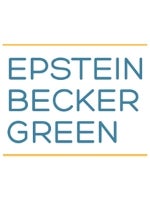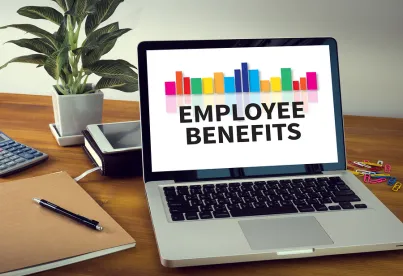Based on proposed regulations released by the U.S. Department of Treasury on November 14, 2018 (the “Proposed Regulations”), participants in 401(k) and 403(b) plans may find it easier to get hardship withdrawals as early as plan years beginning after December 31, 2018. Hardship withdrawals are permitted on account of financial hardships if the distribution is made in response to an “immediate and heavy financial need” and the distribution is necessary to satisfy that need. The Proposed Regulations incorporate various prior statutory changes, including changes imposed by the 2017 Tax Act, the Bipartisan Budget Act of 2018, and the Pension Protection Act of 2006. These changes are summarized below:
1. Safe Harbor Expenses. Under the current regulations, a withdrawal to cover an expense on the safe harbor list is deemed to be made on account of an immediate and heavy financial need. The Proposed Regulations expand the safe harbor list of expenses for which a participant may take a hardship withdrawal, which may be applied to withdrawals occurring on or after January 1, 2018. The primary changes to the safe harbor list made by the Proposed Regulations are:
-
the expansion of the category of individuals for whom a participant may take a hardship distribution for qualifying medical, educational, and funeral expenses incurred by a participant to include a “primary beneficiary under the plan”, i.e., the individual who the participant has designated as the beneficiary to receive the participant’s plan account upon the death of the participant;
-
the elimination of the requirement that expenses related to damage to a principal residence that would qualify for a casualty deduction under Section 165 of the Internal Revenue Code of 1986, as amended be attributable to a federally declared disaster, which was imposed by the 2017 Tax Act; and
-
the addition of a new item allowing for hardship distributions for expenses incurred as a result of certain disasters that occur in areas designated by the Federal Emergency Management Agency (“FEMA”) as eligible for individual assistance.
2. Six-Month Deferral Suspension Requirement Eliminated. Under current regulations, a plan participant must be prohibited from making elective deferrals and employee contributions for six months and must take any available plan loans before the hardship withdrawal. Under the Bipartisan Budget Act of 2018, the six-month suspension requirement must be eliminated by January 1, 2020 and the Proposed Regulations allow the six-month suspension to be eliminated for plan years after December 31, 2018 if the plan sponsor so elects. The elimination of the six-month suspension reflects the concern of Congress that a suspension would impede the employee’s ability to replace distributed funds. Plans, however, may elect to continue to require a plan loan prior to a hardship withdrawal.
3. Participant Representation. To determine whether a distribution is necessary to satisfy an immediate and heavy financial need, the Proposed Regulations rely on the following general non-safe harbor standard:
-
the withdrawal may not exceed the amount of the participant’s need; and
-
the participant must have obtained other available distributions under the employer plans.
Under the current regulations, the plan must use a facts and circumstances test to establish the general non-safe harbor standard. Effective as of January 1, 2020, a participant seeking a hardship withdrawal must represent that he or she has insufficient cash or other liquid assets to satisfy the financial need. The plan administrator may rely on the representation unless the plan administrator has actual knowledge to the contrary.
4. Expanded Sources. The current regulations generally only permit hardship withdrawals from elective contributions. Under the Proposed Regulations, a plan may permit hardship withdrawals from elective contributions, qualified non-elective contributions (QNECs), and qualified matching contributions (QMACs), and also from earnings on these contributions, regardless of when contributed or earned. Since contributions to a 401(k) safe harbor plan are subject to the same limitations as QNECs and QMACs, the Proposed Regulations provide that safe harbor contributions may also be a source for hardship withdrawals.
5. 403(b) Plans. The Proposed Regulations will have some impact on 403(b) plans. While income attributable to elective deferrals will not be eligible for hardship withdrawals under the Proposed Regulations, QNECs and QMACs that are not in a custodial account may be withdrawn on account of hardship.
6. Relief for Hurricane Victims. Because the Treasury Department and IRS recognized that employees adversely impacted by Hurricanes Florence and Michael might need expedited access to their plan accounts, the Proposed Regulations extend to these employees the relief provided by Announcement 2017-15 to victims of Hurricane Maria and the California wildfires. The new automatic FEMA safe harbor standard described above will provide greater certainty and expedited access for plan sponsors and participants that may be affected in the future by such disasters.
Effective Dates and Plan Amendments
As noted above, the Proposed Regulations generally apply to hardship withdrawals made in plan years beginning after December 31, 2018, with a few exceptions described above.
Once the Pr
oposed Regulations are finalized, the deadline for adopting plan amendments related to the final hardship withdrawal regulations will be the end of the second calendar year that begins after the issuance of the Required Amendments List that includes the changes. However, since many of the changes included in the Proposed Regulations reflect statutory changes, plan sponsors may wish to adopt some of the required amendments in 2019 so that their plan documents are consistent with plan administration.




 />i
/>i

